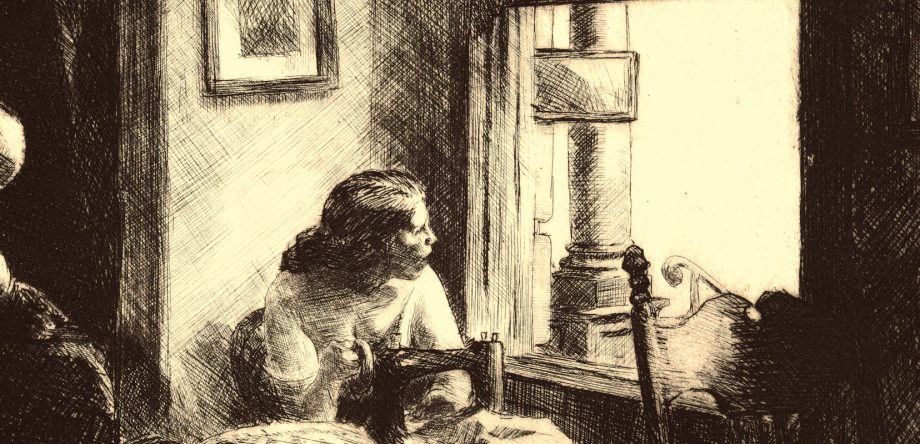Edward Hopper, one of the most significant American realist painters of the 20th century, is renowned for his ability to express solitude and introspection in his artworks. From his early works, Hopper demonstrated a keen understanding of the complexities of human experience and an uncanny ability to capture the emotional depth of his subjects. Through his masterful use of light, composition, and attention to detail, Hopper created poignant and timeless reflections on the human condition.
One of Hopper’s early works that exemplifies his ability to convey solitude and contemplation is the pen and ink drawing “Men Seated at Café Table” (1906). Despite its simplicity, the artwork evokes a powerful sense of emotional depth. The men in the drawing are depicted in a moment of quiet introspection, inviting viewers to ponder their thoughts and emotions. Through minimalistic lines, Hopper captures the essence of urban solitude and sets the stage for his later iconic works.
In “Apartment Houses” (1923), Hopper captures a quiet and contemplative scene in urban life. The solitary figure of a maid standing by an open window invites viewers to reflect on the nature of isolation and the longing for connection in a bustling city. Hopper’s use of light and shadow adds depth and atmosphere to the painting, creating a sense of stillness and introspection.
The painting “Automat” (1927) focuses solely on a solitary figure inside a dimly lit automat. The young woman sitting alone at a small table, deep in thought, represents the isolation and introspection often experienced in an urban environment. Hopper’s masterful play of light and shadow, combined with the woman’s contemplative posture, invites viewers to delve into the emotional depth and inner lives of individuals in a bustling cityscape.
Moving away from urban scenes, Hopper’s “Blackhead Monhegan” (1916) transports us to the rugged and untamed coastal landscape of Monhegan Island, Maine. The absence of human presence intensifies the sense of isolation and tranquility. Hopper’s meticulous brushwork and attention to detail evoke a profound serenity and invite contemplation of the raw beauty of nature.
In the pen and ink drawing “Boy and Moon” (1906), Hopper captures the solitude and introspection of a young boy lost in his imagination. Through the transparent barrier of the wall, the luminous moon and the flock of birds evoke a sense of quiet wonder and the mysterious realms that exist within one’s thoughts.
Another painting that reflects Hopper’s ability to express solitude and introspection is “Girl at Sewing Machine” (1921). The young woman sitting alone in a sparsely furnished room, engrossed in her task, symbolizes the quiet labor of daily life. Hopper’s mastery of light and shadow creates a sense of stillness and melancholy, inviting viewers to contemplate the hidden emotions beneath seemingly mundane activities.
These examples demonstrate Edward Hopper’s remarkable talent for capturing solitude and introspection in his early artworks. Through his masterful use of light, composition, and attention to detail, Hopper invites viewers to reflect on the complexities of human experience, the nature of isolation, and the longing for connection in both urban and natural environments. His works continue to resonate with audiences, offering poignant and timeless reflections on the human condition.




